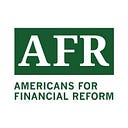Trump’s disaster capitalism rewards real estate investor cronies with extended Opportunity Zone tax break

Post by Oscar Valdes Viera
In recent weeks, we have seen President Trump brag about the Opportunity Zones (O-Zone) tax break as part of his fictional track-record supporting Black communities, as well as push for an expansion of this tax giveaway to purportedly help jump-start a U.S. economy battered into a pandemic driven recession. He is responding to structural racism requiring systemic change and the coronavirus recession by doubling down on tax breaks for the wealthy.
Opportunity Zones are a big tax cut for real estate investors camouflaged as an incentive for private investment in “economically distressed” communities. The tax break is expected to deliver generous benefits to wealthy investors who plow money into rapidly gentrifying areas and booming cities, making housing even more expensive and pushing existing residents of color and lower-income residents out of their communities, as described in a new report by AFR Education Fund, Alliance of Californians for Community Empowerment Institute, Kansas City Tenants, and New York Communities for Change.
The tax break goes to those with substantial capital gains, which overwhelmingly benefits the wealthiest 10 percent of households — half the benefit is likely to be snapped up by the richest 1 percent. Several high-profile investors (including Trump allies) managed to get their real estate projects included in the designated O-Zones, including luxury hotels and condominiums, a superyacht marina, and a ski resort. The O-Zone tax cut lacks any meaningful performance criteria or disclosure requirements that would discourage abuses and allow the public to evaluate whether the investments actually delivered any economic benefits to the residents of low- and moderate-income communities.
The White House and several Republican legislators are using the Coronavirus pandemic as an excuse to expand the O-Zone tax break by relaxing already investor-friendly regulations. In early June, the Treasury Department issued guidelines that would give many investors another year to set up the special Opportunity Funds (O-Funds) and still be eligible for the tax giveaway. The new guidance also bent the already weak rules requiring investors to actually put assets into the designated O-Zone neighborhoods, even though existing loopholes already allowed investors to reap the tax break even if only 40 percent of the money actually went into O-Zones. Relaxing these rules will make it even easier for real estate investors to get tax breaks but further weaken the already extremely limited requirements that investments actually go to the targeted neighborhoods.
Congressional Republicans recently introduced legislation to extend the tax break for O-Zone investors for an extra 4 years because “in a time of such uncertainty for many families and businesses, … [it] just makes sense,” as Congressman Tipton put it. To most of us, a tax break for the top 1 percent when lower income people are bearing the brunt of the crisis seems like the opposite of good sense. What’s more, stealing a page from the Shock Doctrine, several Republicans have proposed legislation seeking to turn the O-Zone real estate giveaway into a repeated tax handout for public emergencies. Their disaster-capitalism legislation would open the O-Zone tax loophole in any federally declared disaster areas, like areas affected by hurricanes and wildfires.
The push to expand O-Zones would make the tax break even easier to exploit. Making matters worse, these investments are likely to harm, not help, the residents of the designated neighborhoods. Extensive evidence has demonstrated that previous similar tax incentive programs to promote economic development ended up raising housing costs and displacing low-income residents and residents of color. The O-Zone tax giveaway is much more generous to investors and more poorly designed than prior tax incentives, making it likely that investments will flow to high-profit opportunity areas where there is already an affordable housing crisis.
The tax break is designed to allow O-Zone investors to target gentrifying areas and avoid areas with higher poverty rates, worsening the yawning racial economic divide in America. As University of California, Irvine professor Mehrsa Baradaran puts it, “‘opportunity zones’ are ‘distressed’ because of forced racial segregation backed by federal law — redlining, racial covenants, racist zoning policies and when necessary, bombs and mob violence.” The O-Zone investments are likely to pour into a subset of more affluent or gentrifying O-Zones where profits are highest, avoiding the majority of lower-income areas and communities of color. In a very Trump-propaganda style, O-Zones represent a slight of hand that allows him to claim he is helping Black and brown communities but really is another gift to Wall Street and real estate titans.
